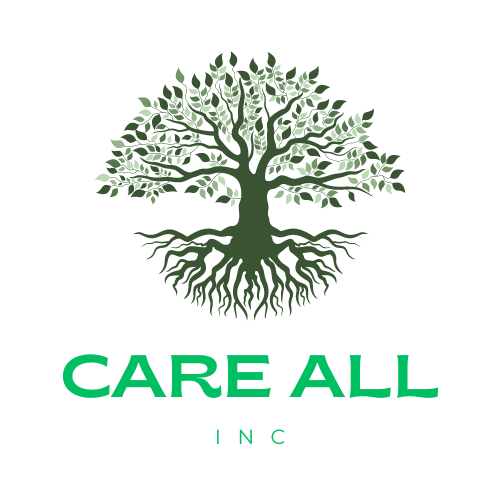In today’s fast-paced world, stress and physical tension are common ailments that many seek relief from through massage therapy.
Becoming a certified massage therapist can be a fulfilling career choice for those interested in helping others achieve relaxation and wellness.
This blog post aims to guide you through each step of this rewarding career path. Whether you’re seeking information on this website or anywhere else, by the end, you will have a solid understanding of how to become a certified massage therapist.
Discover the Benefits of a Massage Therapy Certification
Obtaining a massage therapy certification opens up numerous opportunities in the health and wellness industry. Certified massage therapists are in high demand in various settings, such as spas, wellness centers, and even medical facilities.
Additionally, being certified often means higher pay and increased trust from clients. Certification demonstrates your commitment to the profession and ensures that you have met industry standards for education and practice. Here are some key benefits:
- Establishing Credibility: Clients are more likely to trust and return to a certified professional who adheres to recognized standards.
- Employment Opportunities: Many employers, including spas and clinics, require certification as a condition of employment.
- Higher Pay Rates: Certification often leads to better job opportunities and higher pay rates. According to the Bureau of Labor Statistics, the median pay for massage therapists in 2020 was approximately $43,620 per year. Certified professionals can command even higher salaries, especially in specialized areas like sports massage or medical massage therapy.
- Increased Client Trust: When clients see that their massage therapist is certified, they are more likely to trust the services provided. This increased trust often leads to repeat business and positive word-of-mouth referrals.
Whether you’re looking to boost your career or build a successful practice, obtaining a massage therapy certification is a worthwhile investment that offers substantial financial and professional rewards.
Educational Requirements for Aspiring Massage Therapists
Becoming a certified massage therapist is not just about having a passion for wellness; it requires meeting specific educational requirements to ensure you’re well-prepared for the profession. Here’s what you need to know:
- Complete a State-Approved Program: Enroll in a state-approved massage therapy program, ideally one accredited by the Commission on Massage Therapy Accreditation (COMTA). These programs provide a structured curriculum that includes essential courses like anatomy, physiology, and kinesiology.
- Pass a Certification Exam: After completing your program, you’ll need to pass a certification exam to become a licensed massage therapist. This exam tests your knowledge and readiness for the field.
- Hands-On Practice: Practical experience is vital. Look for programs that offer extensive hands-on training to master various massage techniques in a controlled environment.
- Curriculum Overview: Expect a comprehensive curriculum covering anatomy, physiology, and diverse massage techniques. Some programs also offer elective courses in specialized areas like prenatal massage, sports massage, and reflexology.
- Consider Online vs. In-Person Programs: While online coursework can offer flexibility, hands-on practice is irreplaceable. A hybrid program combining online study with in-person training can provide the best of both worlds.
Choosing the right educational path is crucial for aspiring massage therapists. Accredited programs not only ensure quality education but often include job placement assistance, making your transition into the workforce smoother.
Start your journey today by enrolling in a program that prepares you for a rewarding career in massage therapy.
Gaining Practical Experience Through Internships
Gaining practical experience through internships is an essential step in advancing your career path in massage therapy. Internships bridge the gap between academic learning and professional employment, offering invaluable hands-on experience. Here’s why internships are crucial:
- Apply Knowledge: Internships enable you to apply theoretical knowledge in real-world settings, enhancing your practical skills.
- Network: They provide opportunities to network with industry professionals, which can lead to job offers upon graduation.
- Certification Hours: Many internships count toward the hands-on hours required for certification.
- Tailored Experience: Choose internships that align with your career goals. For instance, if you’re interested in sports massage, seek internships with athletic organizations; for medical massage, consider hospitals or rehabilitation centers.
Approach your internship with professionalism and enthusiasm, be punctual, eager to learn, and proactive. Treat every client interaction as a learning opportunity and seek feedback to continually improve your skills.
Following these steps will not only enrich your educational experience but also make you a more attractive candidate to future employers on your career path.
Navigating the Certification Process
Navigating the certification process is a crucial step on your career path as a massage therapist. Generally, the process involves passing an exam administered by a recognized certifying body. To ensure success, consider the following steps:
- Study and Practice: Utilize study guides and take practice exams to deepen your understanding of various massage techniques, anatomy, and ethics.
- Review Courses: Enroll in review courses offered by educational programs, specifically tailored to help you pass the certification exam.
- Research State Requirements: Each state has its certification regulations, so it’s essential to visit this website to understand what is required in your state.
- Continuing Education: Stay compliant and keep your skills up to date by completing the required continuing education hours. This not only helps maintain your certification but also allows you to expand your skill set and offer new services.
By following these steps, you’ll be well-prepared to meet the certification requirements and advance your career path in the massage therapy profession.
Building Your Career as a Certified Massage Therapist
Building a successful career as a certified massage therapist starts with leveraging your massage therapy certification to its fullest potential. Here’s how you can ensure a thriving profession:
- Network and Build Professional Relationships: Attend industry conferences, join professional organizations, and participate in local business networking events. Establishing connections with fellow professionals can lead to job opportunities and referrals, significantly growing your client base.
- Market Your Services Effectively: Utilize social media platforms, create a professional website, and consider offering promotions to attract new clients. Word-of-mouth referrals from satisfied clients are incredibly powerful, so always provide exceptional service to encourage them to spread the word.
- Continually Develop Your Skills: Stay current with industry trends and continually enhance your skill set. Specializing in a particular type of massage or taking advanced courses can distinguish you from the competition. Remaining educated and adaptable ensures you meet the evolving needs of your clients.
By focusing on these key areas, you can build a rewarding career leveraging your massage therapy certification, positioning yourself as a sought-after certified massage therapist in the industry.
The Role of a Certified Massage Therapist in Wellness
Certified massage therapists play a pivotal role in promoting wellness through a variety of impactful methods. By obtaining a massage therapy certification, you gain the skills to significantly enhance your client’s well-being. Here are some key benefits of becoming a certified massage therapist:
- Stress Reduction: One of the most common reasons people seek massage therapy is to alleviate stress. The therapeutic touch of a skilled massage therapist can help clients relax and unwind, promoting a sense of calm and well-being. Regular massage sessions can be an essential part of a client’s stress management routine.
- Pain Management: Massage therapy is highly effective in managing both chronic and acute pain. Whether dealing with conditions like arthritis or recovering from injuries, techniques such as deep tissue massage and trigger point therapy can provide significant relief.
- Holistic Health Benefits: Beyond stress reduction and pain management, massage therapy offers a range of holistic health benefits. It can improve circulation, boost immune function, and enhance overall physical and mental well-being. By addressing both the body and mind, massage therapy contributes to comprehensive health and wellness.
By becoming a certified massage therapist, you have the opportunity to make a lasting impact on the lives of your clients, helping them achieve better health and a higher quality of life.
Conclusion
The path to becoming a certified massage therapist is a fulfilling and rewarding journey. By obtaining the necessary education, gaining practical experience, and navigating the certification process, you can build a successful career that promotes wellness and improves the lives of your clients.
Stay committed to continual learning and professional development to keep your skills sharp and your practice thriving.
If you are ready to take the first step towards a rewarding career in massage therapy, visit this website and explore your options. Becoming a certified massage therapist is not just a career choice; it’s a commitment to promoting health and wellness in your community.






